
eBook - ePub
Visible Learners
Promoting Reggio-Inspired Approaches in All Schools
- English
- ePUB (mobile friendly)
- Available on iOS & Android
eBook - ePub
Visible Learners
Promoting Reggio-Inspired Approaches in All Schools
About this book
A progressive, research-based approach for making learning visible
Based on the Reggio Emilia approach to learning, Visible Learners highlights learning through interpreting objects and artifacts, group learning, and documentation to make students' learning evident to teachers. Visible classrooms are committed to five key principles: that learning is purposeful, social, emotional, empowering, and representational. The book includes visual essays, key practices, classroom and examples.
- Show how to make learning happen in relation to others, spark emotional connections, give students power over their learning, and express ideas in multiple ways
- Illustrate Reggio-inspired principles and approaches via quotes, photos, student and teacher reflections, and examples of student work
- Offer a new way to enhance learning using progressive, research-based practices for increasing collaboration and critical thinking in and outside the classroom
Visible Learners asks that teachers look beyond surface-level to understand who students are, what they come to know, and how they come to know it.
Frequently asked questions
Yes, you can cancel anytime from the Subscription tab in your account settings on the Perlego website. Your subscription will stay active until the end of your current billing period. Learn how to cancel your subscription.
At the moment all of our mobile-responsive ePub books are available to download via the app. Most of our PDFs are also available to download and we're working on making the final remaining ones downloadable now. Learn more here.
Perlego offers two plans: Essential and Complete
- Essential is ideal for learners and professionals who enjoy exploring a wide range of subjects. Access the Essential Library with 800,000+ trusted titles and best-sellers across business, personal growth, and the humanities. Includes unlimited reading time and Standard Read Aloud voice.
- Complete: Perfect for advanced learners and researchers needing full, unrestricted access. Unlock 1.4M+ books across hundreds of subjects, including academic and specialized titles. The Complete Plan also includes advanced features like Premium Read Aloud and Research Assistant.
We are an online textbook subscription service, where you can get access to an entire online library for less than the price of a single book per month. With over 1 million books across 1000+ topics, we’ve got you covered! Learn more here.
Look out for the read-aloud symbol on your next book to see if you can listen to it. The read-aloud tool reads text aloud for you, highlighting the text as it is being read. You can pause it, speed it up and slow it down. Learn more here.
Yes! You can use the Perlego app on both iOS or Android devices to read anytime, anywhere — even offline. Perfect for commutes or when you’re on the go.
Please note we cannot support devices running on iOS 13 and Android 7 or earlier. Learn more about using the app.
Please note we cannot support devices running on iOS 13 and Android 7 or earlier. Learn more about using the app.
Yes, you can access Visible Learners by Mara Krechevsky,Ben Mardell,Melissa Rivard,Daniel Wilson in PDF and/or ePUB format, as well as other popular books in Education & Education General. We have over one million books available in our catalogue for you to explore.
Information
PART I:
Six Learning Portraits
Chapters 1 through 6 depict six learning portraits from kindergarten through twelfth grades in several disciplines. It is not necessary to read through the portraits sequentially before moving onto other portions of the book; rather, feel free to read those portraits that speak to your interests. If, later in the book, you come across a reference to a portrait that is unfamiliar to you, we encourage you to return to that chapter and read the portrait.
As you read the portraits, we invite you to consider the following questions:
- In what ways do you see learners and learning being made visible?
- How do the practices of group learning and documentation support each other?
- What roles do the teachers and students play in supporting their own and each other's learning?
- How do the practices in these classrooms reflect or extend the ways you make learning visible in your classroom?
Chapter 1
The Yellow Door
Turning Problems into Projects
in Kindergarten
in Kindergarten
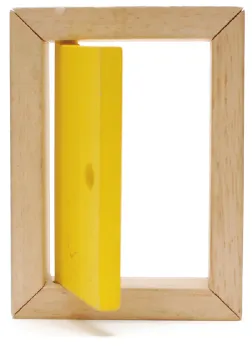
This learning portrait describes how two teachers use student conflict in a play area of their kindergarten classroom to promote children's collaborative inquiry, social and artistic development, and mathematical reasoning.
Children in Nicole Chasse's kindergarten class at the Edward Devotion School* liked to build in the block area. They built and rebuilt sturdy ramps for trucks to speed down and homes for the wooden animals. The only problem was that everyone liked to use the yellow door. As one child named Durjoy explained, “The yellow door was better than the red windows because it was tall enough for the black horse to walk through. But we only had one door and people were having trouble sharing.” Consequently, the yellow door led to lots of arguments.
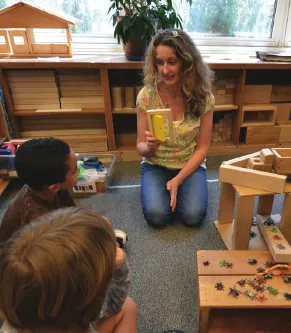
Growing tired of children's increasing arguments over the door, one morning Nicole asked Hakim, Durjoy, and Sajan, “Do you think the block area would be more fun without the door, because it seems like the door is causing too many problems for you to enjoy yourselves?”
Unhappy with the prospect of losing the door, the boys were motivated to find another way to solve the problem.
“Buy more doors!” one boy shouted. Nicole explained that this idea would require money they did not have and encouraged them to keep thinking.
“Make more doors!”
Nicole was intrigued by this idea. She could imagine many opportunities for learning as well as challenges that she posed to the boys: “How could we make doors just as good as the yellow door so people would use them?” Hakim, Durjoy, and Sajan suggested asking John Walker, the assistant teacher, to help because he was an expert woodworker and the yellow door was made out of wood. Later that day, the three boys presented the idea to John and the rest of the class. The idea was received enthusiastically and the door project was born.
The Planning Phase
All the other wood projects we did, John Walker thought up. But this project, we actually worked on the beginning plans.—Amelia
The children's desire to make a door exactly like the cherished yellow door offered many opportunities to advance the children's learning and make connections across several strands of the kindergarten curriculum—including arts, English language arts, and math. Because the children had already done some observational drawing, John suggested interested students make sketches or “plans” for the doors based on careful observation of the yellow door, which he could then use to make the door “kits.” The children would then help with the finishing—sanding, choosing colors, and painting.
Eight children volunteered to make plans. Some students sketched freestyle, whereas others such as Tamar chose to be more precise by measuring the original door with a ruler to find its exact dimensions. Tamar's idea inspired others to use the ruler so John explained the concepts of length and width. They discovered the door was exactly 5½ × 4 inches.

The “Door Hunt”: Collecting Data on Doors
While waiting for John to build the door kits, Nicole took advantage of children's increased interest in doors and asked if anyone wanted to explore the school to see what other kinds of doors they could find. The children loved the idea. Not only did it tap into their fascination with doors but also, as Ava later said, they were able to “go to places that kindergartners don't [usually] get to go to.” Nicole suggested children count and record the different types of doors they saw but did not provide specific instructions on how to record.

Each child took a clipboard, paper, and pencil to record the information. Nicole and John alternated accompanying the small groups, taking pictures or video to document the different doors and children's observations along the way.
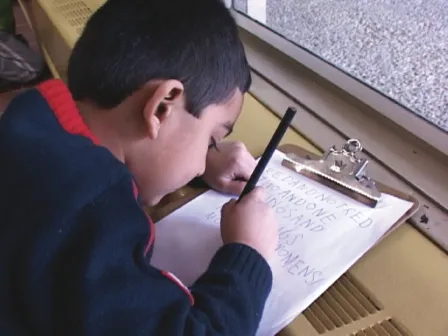
The children's notations reflected the different features they noticed about doors as well as the different methods they each invented to record the data.
Some children recorded the order in which they encountered specific doors, others recorded the number of doors they found with particular features, and still others recorded observations in writing. Sajan recorded the doors he found by writing pairs of contrasting features, “Red and not red, two [doors] and one [door], things [on the door] and no things [on the door].”
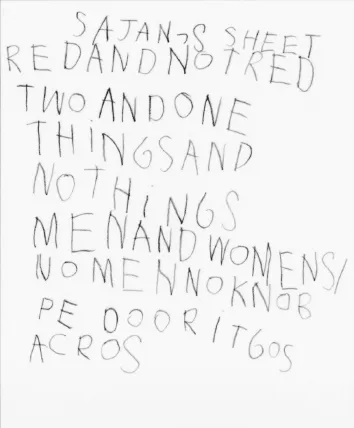
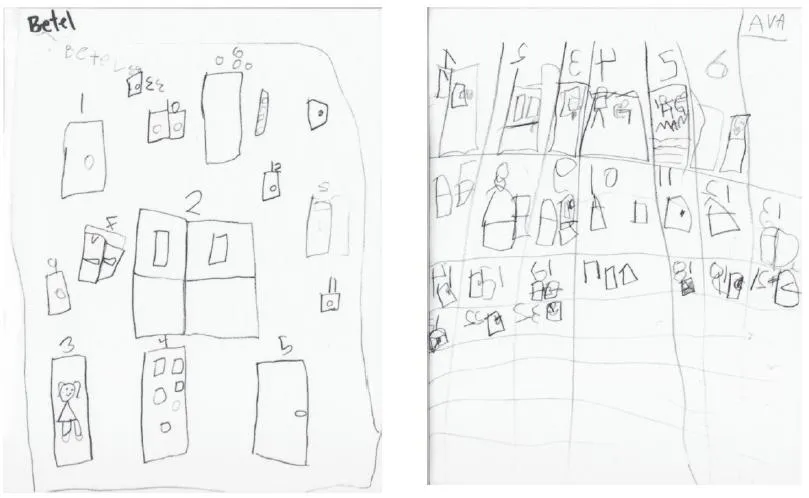
In one group, Amelia (who dubbed this part of the project “the door hunt”) organized her paper into a graph to make room for all the doors she found. When children shared the data they collected with the whole group, the other children found Amelia's method very appealing. The next day, another group followed suit and created similar grid patterns on their paper.
Organizing and Sharing the Data
When Nicole and John looked at the children's data, they noticed the children naturally gravitated toward identifying the doors' different attributes. Because counting, describing, and comparing measurable attributes and classifying objects are important parts of the kindergarten math curriculum, they approached Ms. Boss, the school's math specialist, to seek help on planning next steps that would continue to deepen these skills. The next day, Nicole, John, and Ms. Boss presented the class with a new provocation: “Can you choose one attribute and collect a new set of door information based on only that one attribute?”
Ms. Boss gave the students a blank piece of paper, demonstrated how to draw a graph, and reviewed the question she had posed—discussing the meaning of “attribute” by using examples from the data the children had collected (size, color, material, unique features, etc.). Before setting off with clipboards and graph paper, each child chose an attribute on which to record information. Tamar, Sajan, Ava, and Amelia all decided to record color; Ethan W. chose size.
After the children collected their data on color and size, Nicole took them to the fourth grade hallway to look at the fourth-graders' graphs of “leaf fall data.” She pointed out how they could clearly see which trees lost the most or least leaves in certain weeks. The kindergartners noticed that the fourth-graders used labels and organized the graphs around the types of trees, the weeks they were observing, and the number of fallen leaves. Nicole proposed a new challenge: “Could we take the information we collected from our door graphs and make it into a graph that others in the school could read?”
The group was up for the challenge. Nicole worked with small groups in the hallway while John helped out with the rest of the class. Nicole gave the first group of five a choice of working alone or with a partner and a choice of paper—large lined chart paper or blank white drawing paper. Sajan and Tamar decided to merge their data into one graph. Betel, who had opted out of the door hunts, worked with Ava to transfer her data into a graph on the chart paper. Durjoy decided to work on his own. Here we follow Ava and Betel as they work.
Ava, who seemed to understand the concept of graphing and what it was for, first explained to Betel, “It's lines going that way (indicating horizontally across the page) and lines going down with things in the midd...
Table of contents
- Cover
- More Praise for Visible Learners
- Dedication
- Title page
- Copyright page
- Acknowledgments
- Foreword
- Introduction
- PART I: : Six Learning Portraits
- PART II: : Principles and Practices
- PART III: : Tools for Making Learning and Learners Visible
- About the Authors
- Index
- Photo Credits